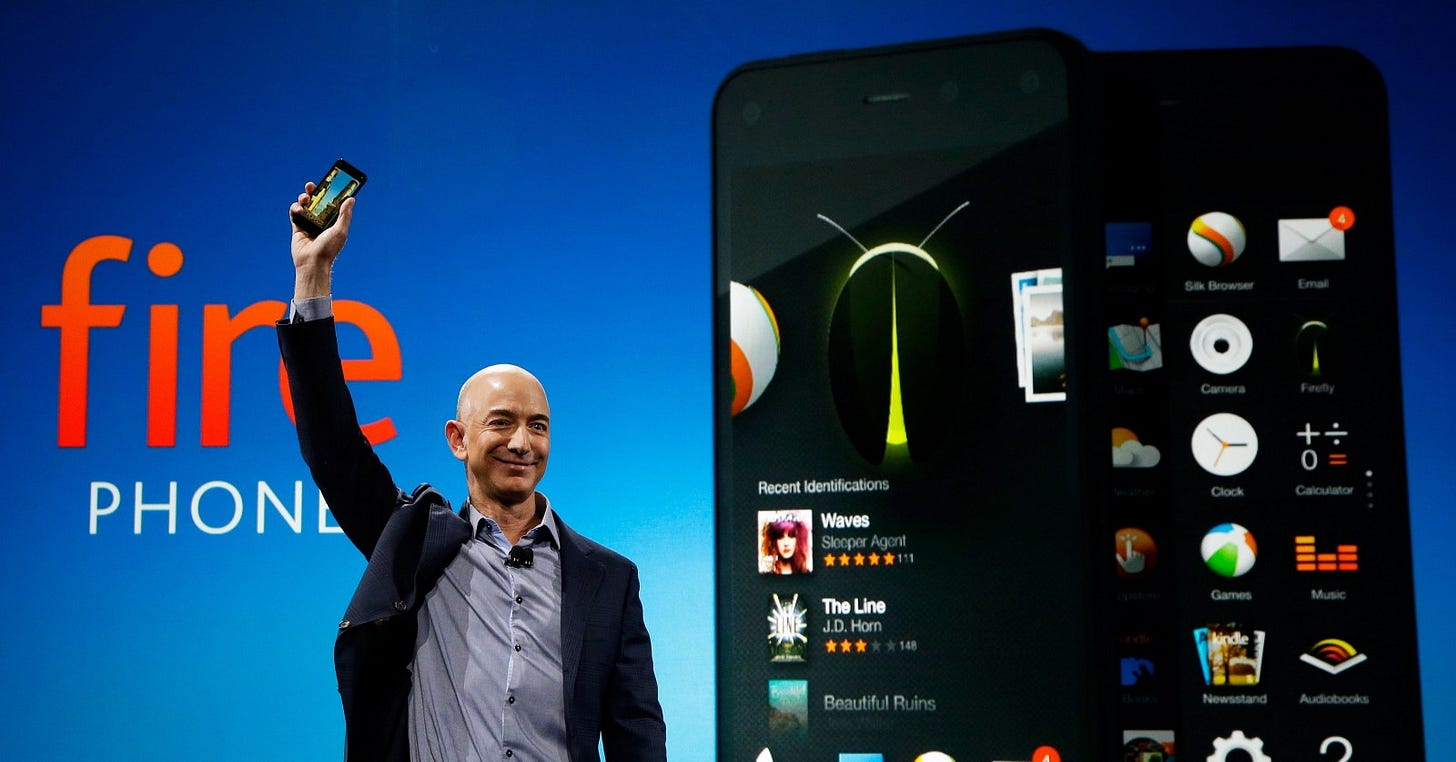If you can’t remember the Amazon Fire Phone, you’re in good company. The product was widely viewed as a flop. Originally selling for $199, prices were eventually cut to $0.99, but to no avail.
There’s been no shortage of articles written about the Fire Phone’s demise. One of the more thoughtful pieces of reporting is The Inside Story Of Jeff Bezos’s Fire Phone Debacle, published by Fast Company in early 2015. Here’s the punchline:
“In late July [2004], the Fire Phone finally went on sale, and it didn’t take long for the company to discover that consumers considered its smartphone effort utterly misguided. Reviewers knocked the device for its gimmicky features, especially Dynamic Perspective, which most found worthless and distracting. They also took issue with the Fire Phone’s bland industrial design and disappointing ecosystem; Amazon simply doesn’t offer the same library of apps or cohesion of services as Apple. But what Amazon got most wrong, they said, was the cost: The Fire Phone was too expensive for its customers. According to three sources familiar with the company’s numbers, the Fire Phone sold just tens of thousands of units in the weeks that preceded the company’s radical price cuts.”
Ultimately, Amazon was forced to take a $170M inventory writedown as unsold Fire Phones gathered dust.
It’s easy to eschew failure. In the near-term, it isn’t likely to get you promoted or to increase your bonus. However, this way of thinking at an individual level becomes dangerous at an organizational level. This is because without experimentation and failure, companies won’t continue growth, an argument made by Jeff Bezos in Amazon’s 2018 Letter to Shareholders:
“As a company grows, everything needs to scale, including the size of your failed experiments. If the size of your failures isn’t growing, you’re not going to be inventing at a size that can actually move the needle. Amazon will be experimenting at the right scale for a company of our size if we occasionally have multibillion-dollar failures. Of course, we won’t undertake such experiments cavalierly. We will work hard to make them good bets, but not all good bets will ultimately pay out.”
Some of this boils down to algebra. If you do $100M in annual revenue, you need an additional $10M to grow 10%. If you do $1B in annual revenue, you need an additional $100M to grow 10%. The initiatives capable of delivering the incremental $10M are unlikely to be the same as those capable of delivering the incremental $100M. So you need to experiment with new and bigger things. Some will succeed and some will go up in flames like the Fire Phone.
The more crucial piece of the argument is learning. If you’re open to it, failure is an excellent teacher. You touch a hot stove. You get burned. You don’t touch the hot stove again. Returning to Amazon’s shareholder letter:
“Development of the Fire phone and Echo was started around the same time. While the Fire phone was a failure, we were able to take our learnings (as well as the developers) and accelerate our efforts building Echo and Alexa.”
You win some, you learn some.
Getting solid data points from Amazon is notoriously difficult, but the company announced in January 2019 that over 100M Alexa-enabled devices had been sold. Both Alexa and Echo devices have been commercially successful and part of this success can be attributed to learnings from the Fire Phone’s failure.
To avoid stagnation, companies need to constantly iterate and experiment. Not every test will succeed, but every failed test can teach. While all companies celebrate success, far fewer celebrate failures. Perhaps it’s time for success to start sharing the spotlight with learnings from failures.




